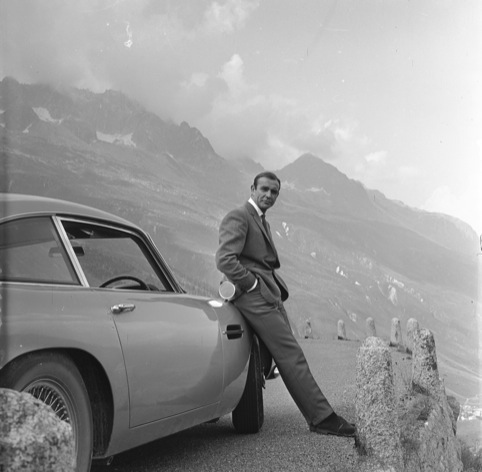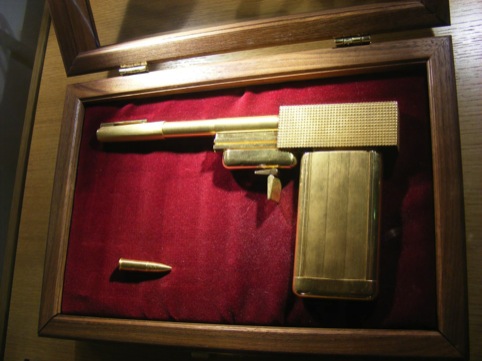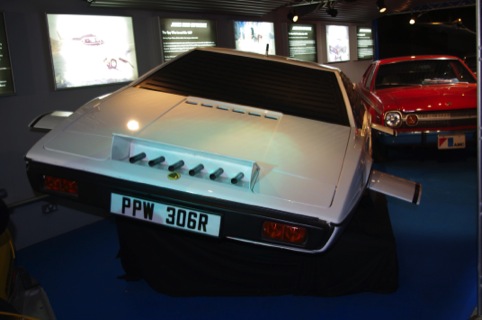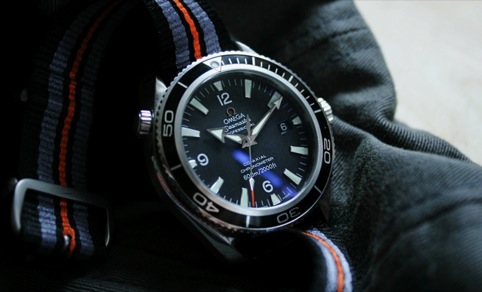‘Pay attention 007’ – the best Bond designs
Today is, rather brilliantly, James Bond Day, a title chosen to mark the 50th anniversary of the release of Dr No, the first-ever Bond film (as well as the release of Skyfall, the latest film).
And in honour of this day of Bond-appreciation, we’ve chosen some of our favourite 007 designs from the past 50 year. Lots of these were on show at the Barbican’s recent Designing 007 – 50 Years of Bond Style exhibition.
Have we missed out any of your favourites? Let us know in the comments.
The Aston Martin DB5

The silver Aston Martin DB5 was the first, and probably the most famous, Bond car. It made its first appearance in Goldfinger, and also pops up in Thunderball, GoldenEye, Tomorrow Never Dies and Casino Royale. Its hidden features include hidden machine guns, licence plates with rotating numbers, an oil-slick sprayer and a tracking device (with a pleasingly old-fashioned user interface). A hidden red button operates a dramatic passenger ejector seat. ‘Whatever you do, don’t touch the button,’ warns Bond’s armourer Q. We all know what will happen later in the film.
Video:
Blofeld’s volcano lair

One of Bond production designer Ken Adam’s greatest triumphs (possibly matched by Goldfinger’s Modernist rumpus room or Stromberg’s underwater Atlantis base in The Spy Who Loved Me), Blofeld’s hollowed-out volcano base featured as a central staging point in You Only Live Twice. The Japanese volcano features a sliding steel door, disguised as a volcanic lake, while hidden inside is a fully-equipped secret rocket base. The set itself was built at Pinewood Studios in Buckinghamshire, and was reportedly the most expensive set ever built at the time, featuring more than 700 tons of structural steel, a usable helicopter pad and a working monorail system.
Video:
Scaramanga’s Golden Gun

Source: Dave McLear
The Golden Gun
Possibly more famous than any of 007’s own weapons – and the only one to lend its name to a Bond film, the Golden Gun is owned by high-priced assassin Francisco Scaramanga, and fires its own golden bullets. The gun is made up of four interlocking parts, with a fountain pen forming the barrel, a cigarette lighter turning into the bullet chamber, a cigarette case forming the handle and a cuff link turning into the trigger. Scaramanga (played by Christopher Lee) proposes a duel with Bond, but vanishes before Bond can fire, and is later shot dead by Bond using his trusty Walther PPK pistol.
Video:
The Lotus Esprit

Source: Dave Merrett
The Lotus Esprit, as driven in The Spy Who Loved Me
Alongside the Aston Martin DB5, probably one of the more iconic Bond vehicles. The Lotus Esprit makes its appearance in The Spy Who Loved Me, when it is delivered by Q to Bond in Sardinia, where he is investigating Stromberg’s underwater base. As well as featuring all the usual weaponry (surface-to-air missiles, cement dispensers to see off pursuers) Bond’s Esprit can also turn into a submarine, with fins and a screw-drive engine. This allows Bond to undertake an essential reconnaissance of the underwater Atlantis base.
Video:
Bond’s watch

Source: ctzn
An Omega Seamaster watch (grappling hook not featured)
Throughout the Bond films, 007 wears a variety of watch brands (dictated, presumably, by which company had paid most for product placement). Rolexes, Seikos and Omega Seamasters all make an appearance, all made standard for 00 agents and featuring gadgets such as lasers, communication devices and explosives. In The World is Not Enough, Bond uses his Omega Seamaster to, variously, inflate a bubble ski jacket to protect himself from an avalanche, and shoot a grappling hook to jump 50 feet out of a pit.
Video:
Omega
-
Post a comment




